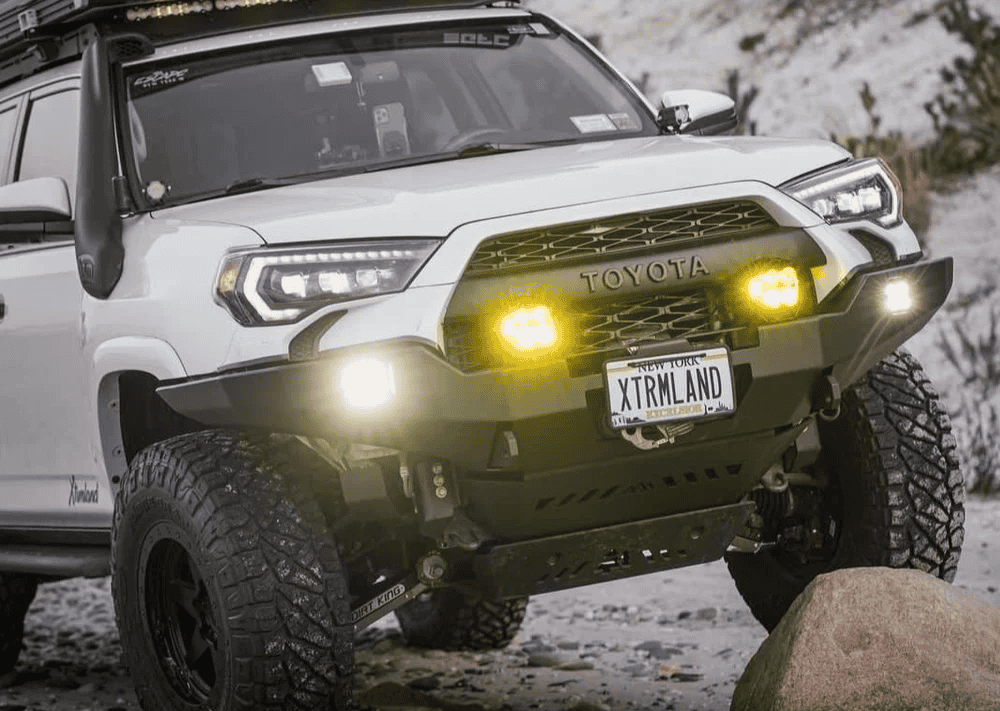Overland Vehicles

A Ford F-150 overland platform starts with a clear mission. Decide where you will drive, how long you will stay out, and what weather you will see. Those answers guide every choice from tires to roof loads. Half ton trucks bring strong frames and modern safety systems, yet the real limiter is payload. Check the door sticker for GVWR, front and rear axle ratings, and payload. Add up real weights for armor, rack, tent, drawers, water, fuel, fridge, and people. Balance the load so the truck still steers, stops, and rides well on rough roads.
Bed systems shape your daily workflow. A low bed rack keeps weight near the center of gravity and fits a soft shell tent with side awnings. A full canopy topper creates lockable volume and weather protection for gear, drawers, and a sleeping deck. Flat bed conversions improve storage and tie down points but change overall length and departure angle. Roof racks help with long items and lighting, though roof weight should be minimized. Keep heavy items inboard and low.
Approach, breakover, and departure angles matter more than extreme articulation for travel focused builds. Skid plates, a front recovery point, and rock sliders protect critical components. Choose a bumper that adds winch capacity without excessive weight. Aim for clean airflow to coolers and radiators and maintain sensor function for modern driver aids.
Weigh the truck at a public scale with typical cargo and passengers. Verify axle splits and compare to ratings. Distribute weight between axles and avoid rear squat that hurts handling and headlight aim. Build in a safety margin rather than running at the limit. Every pound saved in high locations improves comfort and stability.
Quality shocks with proper valving tame washboards and keep tires planted. Pair them with springs tuned for real static load, not a guess. An inch or two of additional ride height can clear ruts without overextending geometry. Choose an all terrain tire with strong sidewalls, the right load rating, and a diameter that fits without trimming. Calibrate pressures for gravel, washboard, and highway transitions to protect tires and maintain control.
Electrical is the backbone of an overland platform. A dedicated house battery with a DC to DC charger isolates the starter battery and keeps accessories powered while you drive. Add a compact inverter for small AC tools and chargers. Use proper gauge wire, fusing at the source, and tidy routing with protected junctions. Label everything and plan service access, not just first install.
Water turns a campsite into a home. A modest onboard tank with a simple pump and quick connects covers cooking and cleanup. Store it low and inside the thermal envelope when possible, with a drain for winterization. A portable filter and a backup gravity bag add resilience.
Storage defines pace. Drawers keep tools and kitchen kits accessible while preventing a yard sale inside the bed. Use soft bags for clothing and a small hard case for spares and fluids. A slide for the fridge makes daily use effortless. Place recovery gear where it can be reached with the truck in a ditch. Mount a full size spare in a spot you can access on uneven ground.
Communications and navigation should be simple and redundant. Download offline maps, carry a charged satellite messenger, and run a handheld or mobile radio where legal. Add work lights for camp setup and a pair of quality driving lights for empty highways after dark. Keep wiring for lights on dedicated circuits with relays or solid state control modules.
Bundle circuits by function, fuse them properly, and strain relieve every run. Use marine grade connectors and heat shrink for reliability. An energy monitor helps you understand real consumption from the fridge, lights, and chargers. Solar extends stays but size it to your pattern rather than chasing a large array you rarely use.
Budget for the unglamorous parts. Fluids, spares, tools, and routine service keep you moving. Factor in alignment after suspension work and recalibration for tire size if needed. Measure overall height with the tent and rack so you do not meet a low branch the hard way. Keep legality in mind for lighting, plate visibility, and mirror coverage. Insurance and warranty considerations vary by region and equipment, so document modifications and retain OEM parts where reasonable.
Practice packing at home. Stage a dry run weekend within a short tow distance of help. Adjust tire pressures, shock settings, and cargo locations after the first bumpy road. Tune the kitchen workflow so hot drinks and breakfast are quick even in wind. A short shakedown trip reveals more than weeks of planning.
When you want expert hands on your build, a professional shop can shorten the path. Thoughtful integration of racks, power, lighting, and storage turns a parts list into a cohesive truck. Explore our overland rigs to see the approach behind balanced travel builds, then check our custom overland upfit for tailored packages. If you are comparing builders, learn more at why choose OZK Customs.
Plan with intention, build with restraint, and let the miles prove the choices. If your Ford F-150 overland platform needs precise fabrication, clean wiring, and a dialed camp workflow, the right partner makes all the difference. Reach out to map your routes, your gear, and a build sequence that matches your timeline.
Ready to turn your F-150 into a confident overland truck? Book a build consult and get a clear plan, budget ranges, and a timeline. OZK Customs designs, fabricates, wires, and hands you a dialed rig with a trail tested workflow. Start your build conversation today.
ADDRESS:
6159 E Huntsville Rd, Fayetteville, AR 72701
PHONE:
(479) 326-9200
EMAIL:
info@ozkvans.com